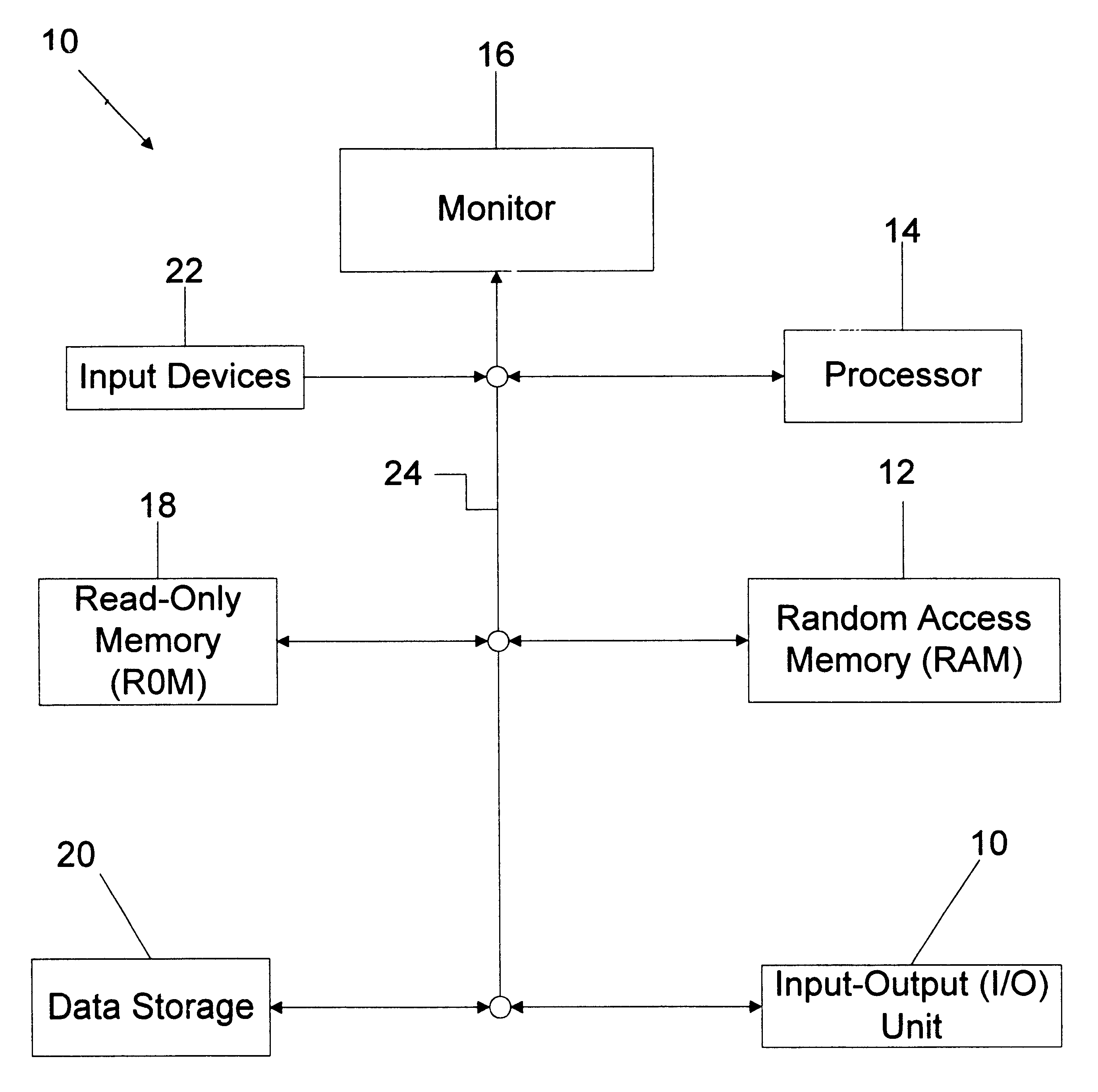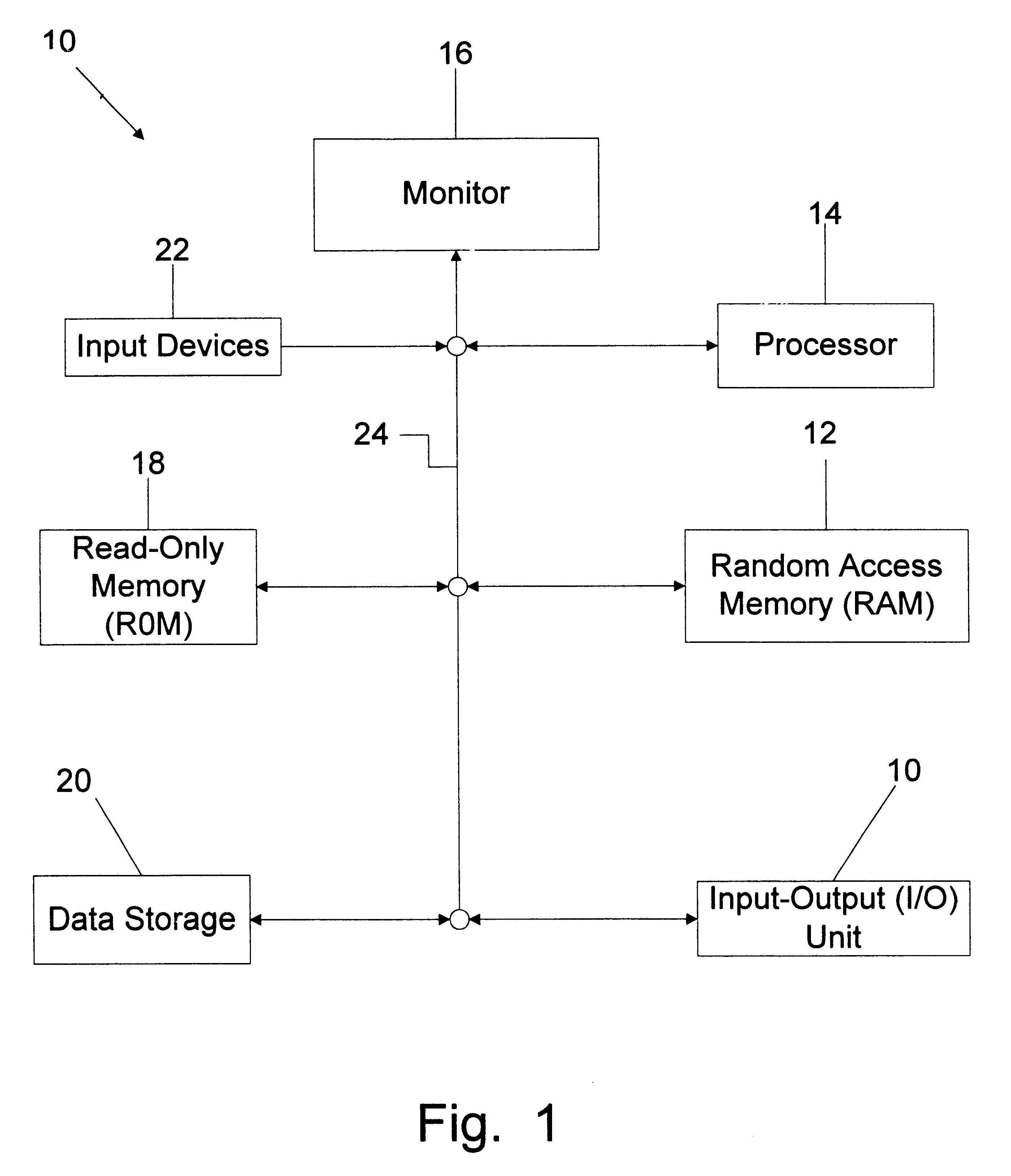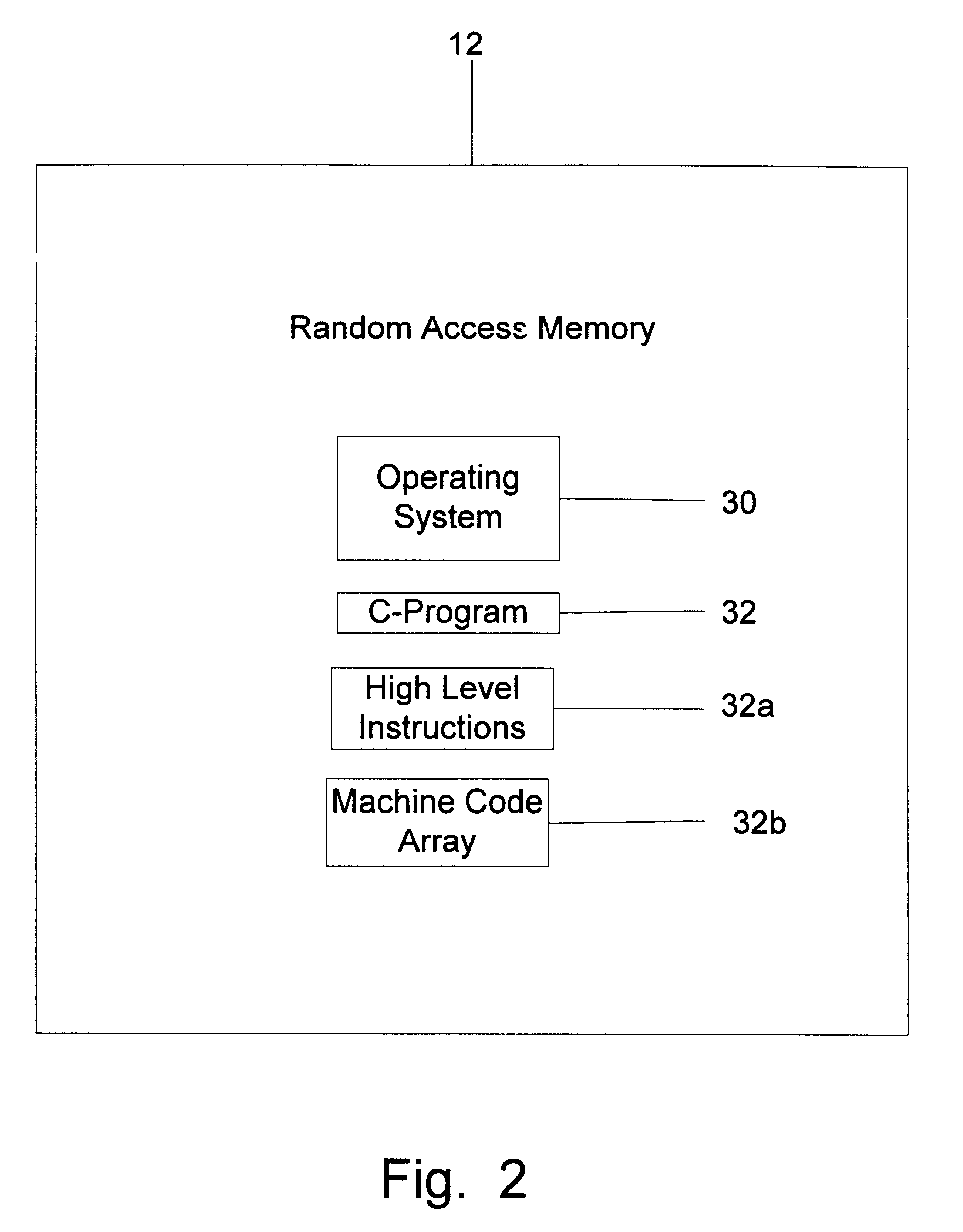Apart from being practically infeasible for a real
robot, this method could result in over-specialization and failure to evolve a behavior that can generalize to unseen environments and tasks.
The principal
disadvantage of this interpreting approach to
machine learning is that the Learned Elements and many of the Conversion Elements are stored in high level, symbolic data-like structures.
The need to convert (interpret) the Learned Elements and some of the Conversion Elements into native
machine code at run-time before any useful action or output may be had from a computer is very
time consuming and involves a large amount of overhead in machine resources such as
CPU time, RAM memory, and
disk space.
Simply put, interpreted systems are slow and use a lot of a computer system's resources.
Such repeated accesses to RAM data structures is
time consuming and uses extensive amounts of RAM to hold the Learned Elements.
They store access, alter and execute run-
time data in a manner similar to the storage, access, alteration and execution of the Learned Elements in the systems described above and are subject to the same limitations of slow execution and system overhead as the systems described above.
This results in a speed-up of several orders of magnitude.
There is an increase in friction with the walls making it hard for the circular
robot to turn while in contact with a wall.
The closer the robot's sensors are to an object, the more pain it experiences.
This could result in "unfair" comparison where individuals have to maneuver in situations with very different possible outcomes.
Naturally, the behavior is erratic at the outset of a run.
During the first minutes, the robot keeps colliding with different objects, but as time goes on the collisions become more and more infrequent.
However, it was determined that the system then forgot important early experiences.
This results in a speed up of more than 2000 times in the GP system.
On the other hand, there is now a more complex task to learn.
The system without memory behaves in a very complex way and gives the impression of a small bug which randomly runs around avoiding obstacles, but with little overall strategy.
In most cases, however, the robot wanders off its path and comes too close to an obstacle where it then is unable to cope with the new situation and experiences collisions.
The path the robot travels is, however, very limited and it is not a preferred solution.
This strategy also involves state information because turning 180 degrees takes several events in the robot's
perception, and that cannot be achieved without states.
This results in less robust behavior with a more frequent convergence to local optima such as displayed by the first strategies in FIG. 15.
It also represents the problem to the computer in the native language of the computer, as opposed to high level languages that were designed for human, not for machine, understanding.
It is believed that by using an intermediate process such as interpretation or compilation of high level codes, previous systems may actually interfere with the ability of computers to evolve good solutions to problems.
No control instructions such as jump instructions are allowed which means that no loops can be formed.
These limitations reduce the complexity and thus
execution time of the individual programs.
Conventional application programs often fail to use the computer to its full potential because the algorithms are not implemented in the most efficient way.
It is surprising that there are no existing
programming languages with specialized features and tools for this
programming paradigm.
It is so deeply rooted that most designers of higher language programmed have made it impossible for the
programmer to access and manipulate binary programs.
It is also surprising that no languages are designed for this kind of task.
The principles above do not anywhere prevent a program from manipulating the contents of memory locations that later will be placed in the
program counter and run by the processor as it interprets it as instructions.
When programing or discussing machine language, it is often impractical to use numbers for instructions.
Assembly language is not, however, machine language, and cannot be executed by the processor directly without the translation step.
A call instruction is not sufficient to make a complete function call.
However, all portability would be lost, and it is therefore preferred to provide the manipulating program in a high level language such as C.
The execution of a DCTI couple is awkward.
The save and restore functions, however, consume processor cycles.
If there is room inside the processor, the time consumption is moderate, but if storage in memory is needed it will take many processor cycles.
The same problem exists with a normal
branch instruction.
The first of these two save instructions will be unbalanced, not corresponding to a restore, and the registers will be corrupt.
Regardless of which approach is used for
recursion, there will always be the problem of infinite chains of instruction calls.
The halting problem makes it impossible to know in advance which
recursive functions will stop and which will not.
The main
disadvantage with the machine code manipulating technique is that it is machine specific.
For example, every time an illegal instruction is encountered by the processor, a hardware interrupt is generated.
This increases portability, because faults can sometimes be ignored that arise due to incompatibilities of different architectures.
This could potentially make the
crossover operator less efficient for large individual sizes.
 Login to View More
Login to View More  Login to View More
Login to View More 


